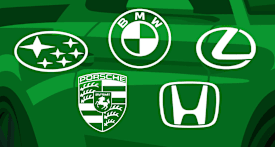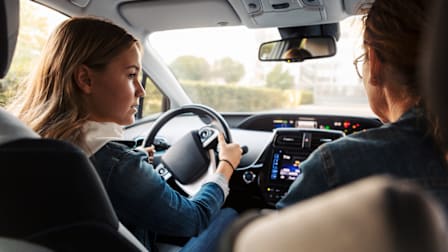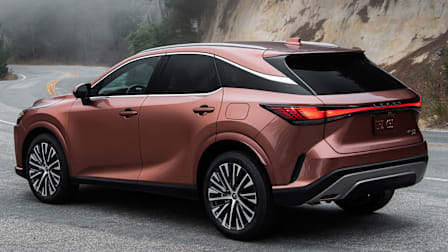Look ahead, around, and behind. “It’s important to look where you want to go, scanning both far ahead and right in front of you,” Crossen says. “But don’t forget about what’s going on to the sides and behind you. You should check your rear- and side-view mirrors every 5 to 10 seconds. That can help you anticipate any potential hazards and know if you can safely and quickly change lanes in an emergency.”
Be aware of blind spots. Before you start driving, make sure the rear- and side-view mirrors are adjusted correctly so that you can see as much as possible. “Keep in mind that the mirrors don’t show you everything,” Crossen says. “There will still be blind spots behind you—and possibly even out front, if your car has fat A-pillars. Know where those blind spots are and take extra time to signal if you want to change lanes or turn.”
Give yourself reaction time and space. Pretend your car has an invisible bubble around it, personal space you don’t want other cars to invade. “Avoid the urge to tailgate, but give yourself ample room on the sides, too,” says Crossen. “Leaving more space around your car gives you more time to react if something goes wrong.” A general rule is to leave 3 seconds of space between your car and the one ahead of you. To check your distance, when the car ahead passes a signpost, you should be able to count 3 seconds before your car passes the same point. Higher speeds require a longer following distance.
Be predictable. “Signaling before you turn, as well as accelerating, braking, turning, and changing lanes smoothly, shows other drivers your intentions,” Crossen says. “That gives them more time to react, which is especially important considering the volume of people who are distracted by smartphones, fatigue, and even complicated infotainment system controls.”
Mind the conditions. If the roads are wet, snowy, or icy, or if heavy wind gusts make staying in your lane a challenge, adjust your speed accordingly. “Whenever weather or visibility deteriorates, the best way to stay safe is to lower your speed,” says Crossen. “The same thing goes for heavy traffic. Slow down and give yourself plenty of space, even if you’re running late because of a slowdown.”
Use your technology. Many cars now come standard with advanced driver assistance systems (ADAS) that can help you stay in your lane and tell you if another car is in one of your blind spots. If you have it, use it. “Some people don’t use ADAS features because they think they don’t need them, but these systems are like a second pair of eyes that can see and react to things that the driver may miss,” says Maddie McCarty, an automotive engineer at CR who focuses on evaluating vehicle technology and safety.
Know yourself. No one should ever drive under the influence of drugs or alcohol, but did you know that driving drowsy can have similar effects? According to the AAA Foundation for Traffic Safety, 17 percent of fatal motor vehicle crashes involve driver fatigue. “If you’re feeling sleepy, pull over and rest for a bit,” says Crossen. “It’s better to arrive late than not to arrive at all.”





















